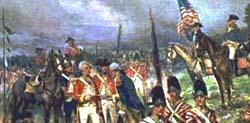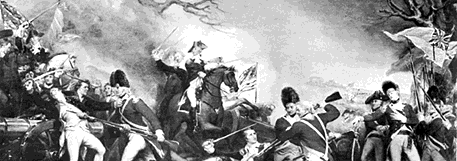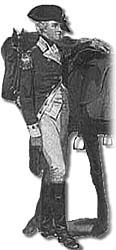
[Burgoyne's surrender at Saratoga] c1911. 1 photomechanical print from Prints and Photographs Division, Library of Congress. Reproduction #: LC-USZ62-19709(b&w film copy neg.) |
British General Henry Clinton's Invasion of the Highlands
September 24, General Henry Clinton in New York receives substantial reinforcements of British regulars and German mercenaries.
The "Conway Cabal" and Valley Forge
November 3, General Lord Stirling (William Alexander) of New Jersey writes Washington, enclosing a note that recounts General Thomas Conway's criticisms of Washington and of Conway's preference for Horatio Gates as commander in chief of the Continental Army. October 28, Gates's aide, James Wilkinson, had incautiously related the matter over drink in a tavern in Reading, where Stirling was also staying. Washington writes Conway, November 5, tersely informing him of his knowledge of the affair. George Washington to Thomas Conway, November 5, 1777
1774 | 1775 | 1776 | 1777 | 1778 | 1779 | 1780 | 1781 | 1782 | 1783
The Colonial Period | The Early Republic | George Washington Papers Home Page

